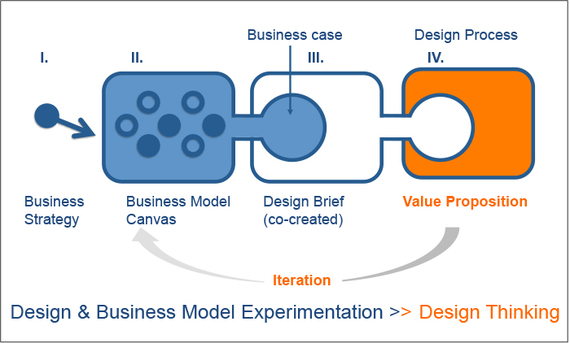Knowing how to bridge business and design is evidently completely different from actually being able to execute well. Most corporate project managers have one-and-a-half projects worth of experience under their belt, before they are either kicked upstairs or out in the cold. This leaves them at the mercy of design consultancies with loads of experience in taking ideas to market.
Failing to deliver an offering that works technically well, will get a manager in trouble, however it is only half the heresy of successfully developing an offering, which addresses a market that may end up not existing at all. This skewed market-technology risk; rewards managers for playing it safe and focuses on incremental innovation in cost cutting, feature development and performance improvements rather than breakthrough market creation.
This tendency is further propelled by our very human, inherently hardwired intuition biases. When it comes to new product development, the most common biases in effect, are being overly optimistic of an ability to perform and achieve easy wins (Hard-easy effect), a narrow focus on the positive sides of innovation (Pro-innovation bias) and a tendency to stick with the first idea that comes to mind (Anchoring effect). This three ingredient cocktail makes for product line-extension rather than one that has the potential for uncovering novel business opportunities.
To break this self-reinforcing spiral of mediocrity, new behaviours need to be acquired, using novel processes for business managers and designers alike. For decades, business cases sharing historical data on business endeavours formed the basis for learning. However, business cases have the debilitating drawback of being highly context dependent and, therefore, little can be really learned and transferred. Often business cases harm more than they help by providing a false sense of direction and confidence.
The current Design Thinking process, however, is a good starting point for learning better management and design behaviours. When combined with Design & Business Model Experimentation, it assists teams in challenging current assumptions and can produce truly clever ideas.
The Design & Business Model Experimentation + Design Thinking method has four steps:
I. Creation of a Business Strategy
II. Business Model Experimentation
III. Formulation of Business Plan and Inspirational Design Brief
IV. Design Thinking: The step-by-step execution, which is described and visualized in the following:
As question and answer based learning takes place in each phase, effectually informing the previous phase, multiple loops occur. The first iteration supports a generation of concepts, the second, design detailing and refinement, the third, engineering, the fourth, simulation of use and the fifth, the complete user experience. Each iterative step re-examines the assumptions and instructions in the previous steps, while evolving business-design concepts from abstract thought to concrete artifact.
Though the Design & Business Model Experimentation process supports both incremental and breakthrough innovation, the current Design Thinking process addresses incremental innovation best, since it relies on user studies.
To facilitate breakthrough innovation, a couple of methods have emerged over the past decade, such as Customer Discovery (Steve Blank), Design Driven Innovation (Roberto Verganti), Dark Horse Approach (T Bushnell et al.), Market Orientation, Creativity, & New Product Performance in High-Technology Firms (Subin Im & John P. Workman Jr.) and Gamification in Concept Design (Søren Petersen and Blake Ryu).
Acknowledging that one's project management skills may be limited, that incentives are skewed towards minor product upgrades and that one's natural intuition bias is at work against effective innovation, is a good starting point for change. However, a concerted effort and application of new processes is required to consistently overcome these challenges. With practice, new competitive advantages can be built into bridging business and design and when that happens, it becomes the new normal and it then becomes impossible to return to doing business as usual.
For slideshow on how to use the process, see: Design & Business Model Experimentation
For a video demonstrating its use, see Business Advantage Breakfast at the agIdea International Design Week, in Melbourne:
Commanding control of the Bridging Business & Design process has shown to reduce the number of intuition biases in the Design Thinking phase.
